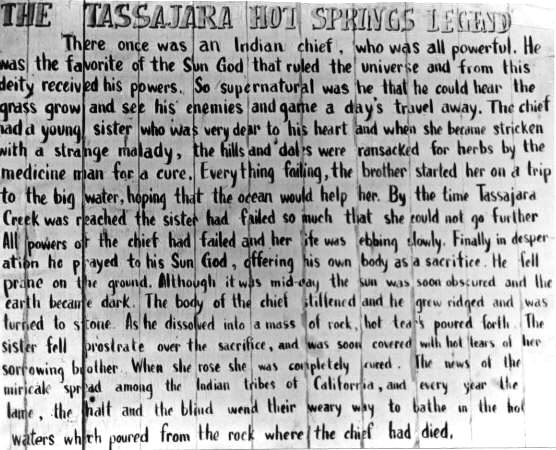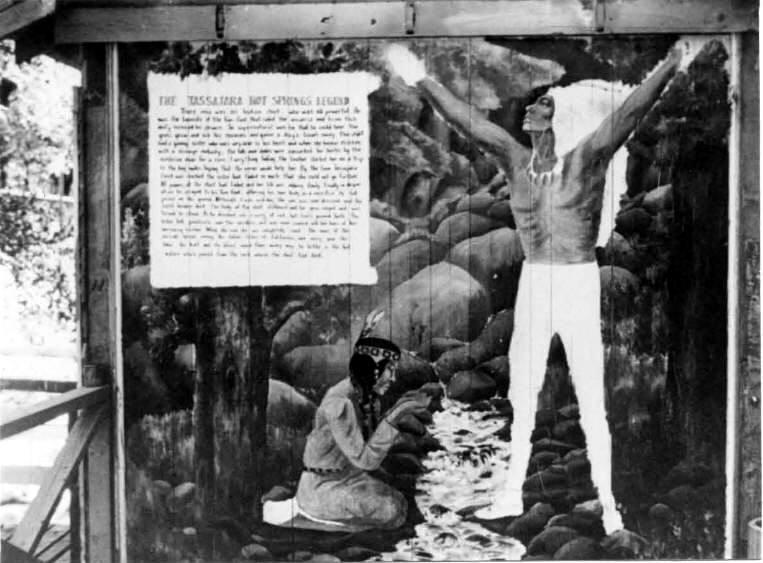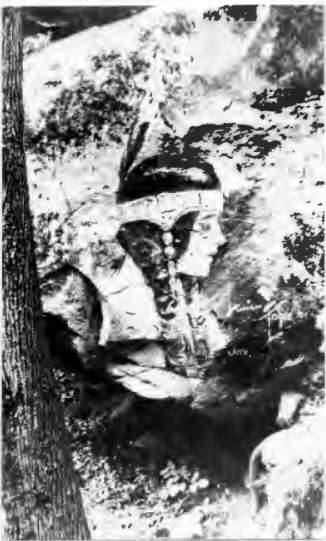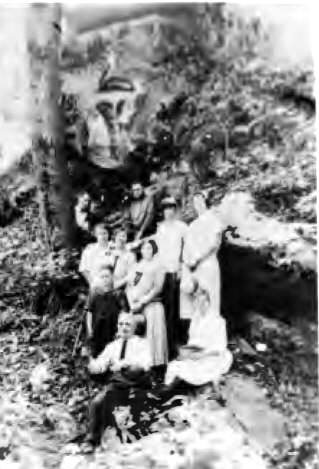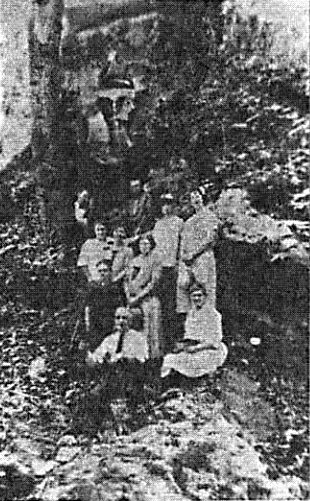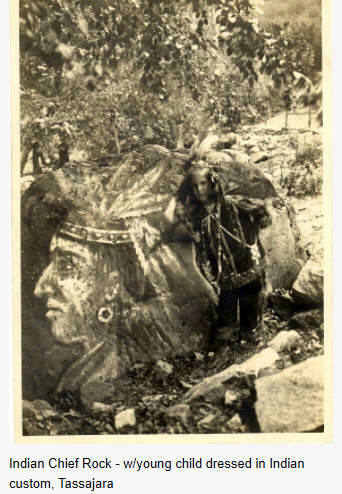|
Mural of an Indian Legend at
Tassajara The Tassajara Hot Springs Legend (from the mural) There once was an Indian chief who was all powerful. He was
the favorite of the Sun God that ruled the universe, and from this
deity received his powers. So supernatural was he that he could hear
the grass grow and see his enemies and game a day's travel away. The
chief had a young sister who was very dear to his heart and when she
became stricken with a strange malady, the hills and dales were
ransacked for herbs by the medicine man for a cure. Everything
failing, the brother started her on a trip to the big water, hoping
that the ocean would help her. By the time Tassajara Creek was
reached, the sister had failed so much that she could not go
further. All powers of the chief had failed and her life was ebbing
slowly. Finally in desperation he prayed to his Sun God, offering
his own body as a sacrifice. He fell prone on the ground. Although
it was mid-day the sun was soon obscured and the earth became dark.
The body of the chief stiffened and he grew rigid and was turned to
stone. As he dissolved into a mass of rock, hot tears poured forth.
The sister fell prostrate over the sacrifice, and was soon covered
with hot tears of her sorrowing brother. When she rose, she was
completely cured. The news of the miracle spread among the Indian
tribes of California, and every year the lame, the halt, and the
blind wend their weary way to bathe in the hot waters which pour
from the rock where the chief died. The mural
The Legend on the Mural
The Chief
The Chief's Sister
Young Indian woman painted on a rock up the road by the creek near Tassajara
photos by Hiroyuki Ikushima June 2017 and thanks to Leslie James for seeing it was done. - dc
above are four old photos from Marilyn McDonald's Tassajara History book
This is no longer there. Early 20th century On the mural from the 1984 Wind Bell Vol.1 (spring) article on rebuilding the baths quotes Tassajara historian Marilyn Doyle (McDonald). That article also says she provided Tassajara with photographs which must mean good quality copies. She wrote (full quote here):
In Gene DeSmidt's story of finding Indian bones at Tassajara, he tells of taking two women of Esselen Indian descent to see the mural - Loretta Oscobar Wyer and Ann Comilos.
So one had heard hot tears and the other had heard hot blood from their elders. Like Gene in this piece, we tend to say that it was the maiden's tears but the story relates that the tears came from the stone that once was the chief, To me there are two important points in that paragraph. One is that it establishes that the legend is based on actual Esselen Indian legend and the other is to point out that the details are all wrong - what they wre wearing and the body shapes. - DC The Story of Indian Bones (found at Tassajara) PDF - Gene deSmidt in the Winter 1995 Wind Bell - read it on his site in the Tassajara Project section. From a DC interview with former owner of Tassajara (1960-1966) Bob Beck
|
